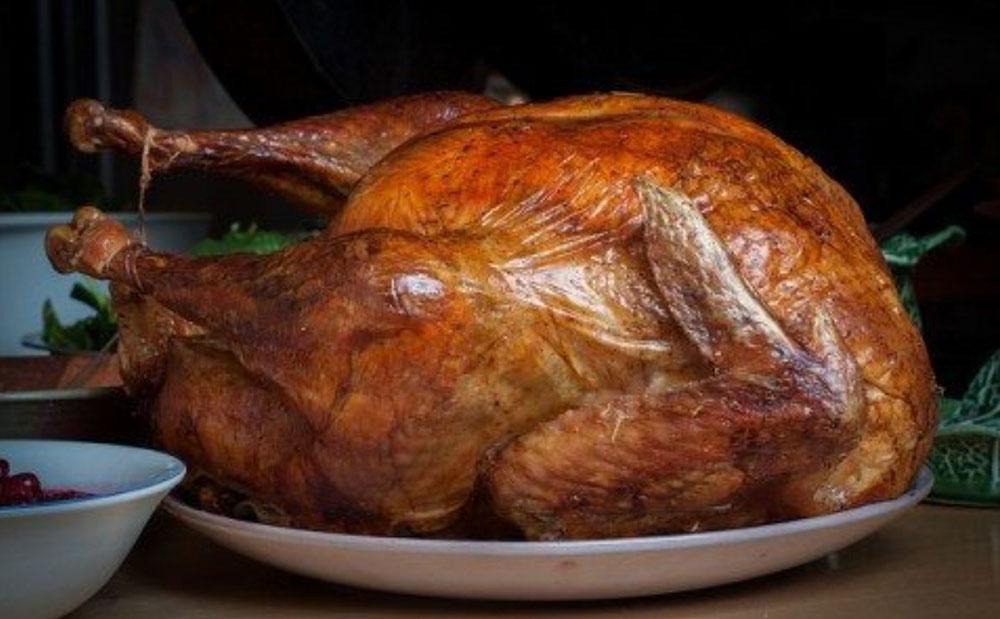5 Thanksgiving Safety Tips for Turkey Day

Nobody wants to end their Thanksgiving in the emergency room, but every year unavoidable accidents happen because people forget basic safety precautions. You don’t need to burden your celebrations with a blanket of fear over what might happen, but it makes sense to be aware of potential dangers and practice basic thanksgiving safety measures.
Thanksgiving Safety Prep
This favorite staple of the family get-together is responsible for more than its fair share of Thanksgiving mishaps – from urgent bathroom trips to emergency room visits. Follow these three steps to feed the family in style:
Thanksgiving Safety Tip #1:
Thaw Frozen Turkeys Thoroughly – Overnight won’t do it for big birds.
- Refrigerate it, allowing one day for every 4 – 5 pounds of weight.
- Submerge it in cold water, wrapped in waterproof packaging. Allow around 30 minutes per pound, and change the water every half hour to keep it fresh.
- Microwave it, following the instructions on the packaging to the letter.
- If you don’t thoroughly thaw out the turkey, the still-frozen center won’t cook properly and there’s a risk of food poisoning.
Poultry easily contaminates other food, utensils or work surfaces. Always wash and clean everything the turkey has touched before moving on to other food prep.
Thanksgiving Safety Tip #2:
Check the Stuffing Temperature, Too
Stuffing a turkey can increase cooking times, so make sure you check a stuffed bird with a food thermometer to make sure the center of the stuffing has reached the right temperature to kill bacteria – 165 degrees F.
It’s safest to cook the stuffing separately in a casserole dish, but lots of us like the stuffing inside the bird. If you are stuffing your turkey, do so as soon as it’s thawed, immediately before cooking.
Thanksgiving Safety Tip #3:
Cook it Right
Cooking times vary depending on the size of the bird.
- Make sure your oven is at least 325 degrees F.
- Cook breast side up, on a wire rack in a roasting pan at least two inches deep.
- Use a food thermometer to check the temperature and make sure it’s cooked.
- Allow it to stand for 20 mins before serving.
- If you buy a prepackaged turkey, cooking times and instructions should be on the packaging. In general, terms, allow around 20 minutes per pound for a defrosted bird as a rough guide.
- Fresh turkeys cook a little quicker.
Avoid the Most Common Thanksgiving Safety Accidents
In the fun and festivities, it’s easy to forget basic safety measures. Among the most common accidents that send people to the emergency room are cuts, burns and food poisoning. We’ve got you covered with turkey-cooking tips, so here are some tips on avoiding the others:
Thanksgiving Safety Tip #4:
Handle Knives with Care
Sharp knives need pressure to cut, so they’re less likely to slip.
- Curl your fingers away from the blade when chopping.
- Don’t take your eyes off the job for a second.
- Always chop and slice on a flat, non-slip surface.
- Don’t try and catch a falling knife.
- Load knives in the dishwasher pointed end down.
If anyone is unlucky enough to get a cut, you can treat it yourself if it’s under half an inch and you can’t see any tissue coming from the wound:
Wash it gently with clean water – don’t hold cuts under a fast-running faucet.
Apply pressure with clean gauze to stop the bleeding
Apply a clean dressing
If you’re at all concerned, get medical help.
Thanksgiving Safety Tip #5:
Avoid Fire Risks
Fires are amongst the biggest dangers over Thanksgiving. According to the NFPA, there are three times as many domestic fires compared with any other day. Being aware of the hazards and knowing what to do is the best safety precaution you can take:
- Stay in the kitchen while you’re cooking, especially frying. Unattended pans do unexpected things.
- Make regular checks on simmering or roasting foods.
- Turn pan handles to the back to avoid accidental knocks and spills
- Keep oven mitts and wooden spoons away from flames.
If a fire does break out, don’t panic:
- Small fires in grease pans can be extinguished by sliding the pan lid over the flames, turning off the heat and leaving the pan alone to cool. Don’t be tempted to peep inside until the pan is completely cold since letting in the air can reignite the flames.
- For oven fires, keep the door closed and turn off the heat. One tip if using aluminum disposable roasting trays is to use two instead of just one, for extra strength. They easily puncture, and dripping fat can cause fires.
- Keep a fire extinguisher in the kitchen and know how to use it.
- Make sure your smoke alarms are working.
Don’t take risks with fire, especially grease fires. Never try to extinguish them with water – this will only spread them faster.
Stay safe, and have a wonderful Thanksgiving.




